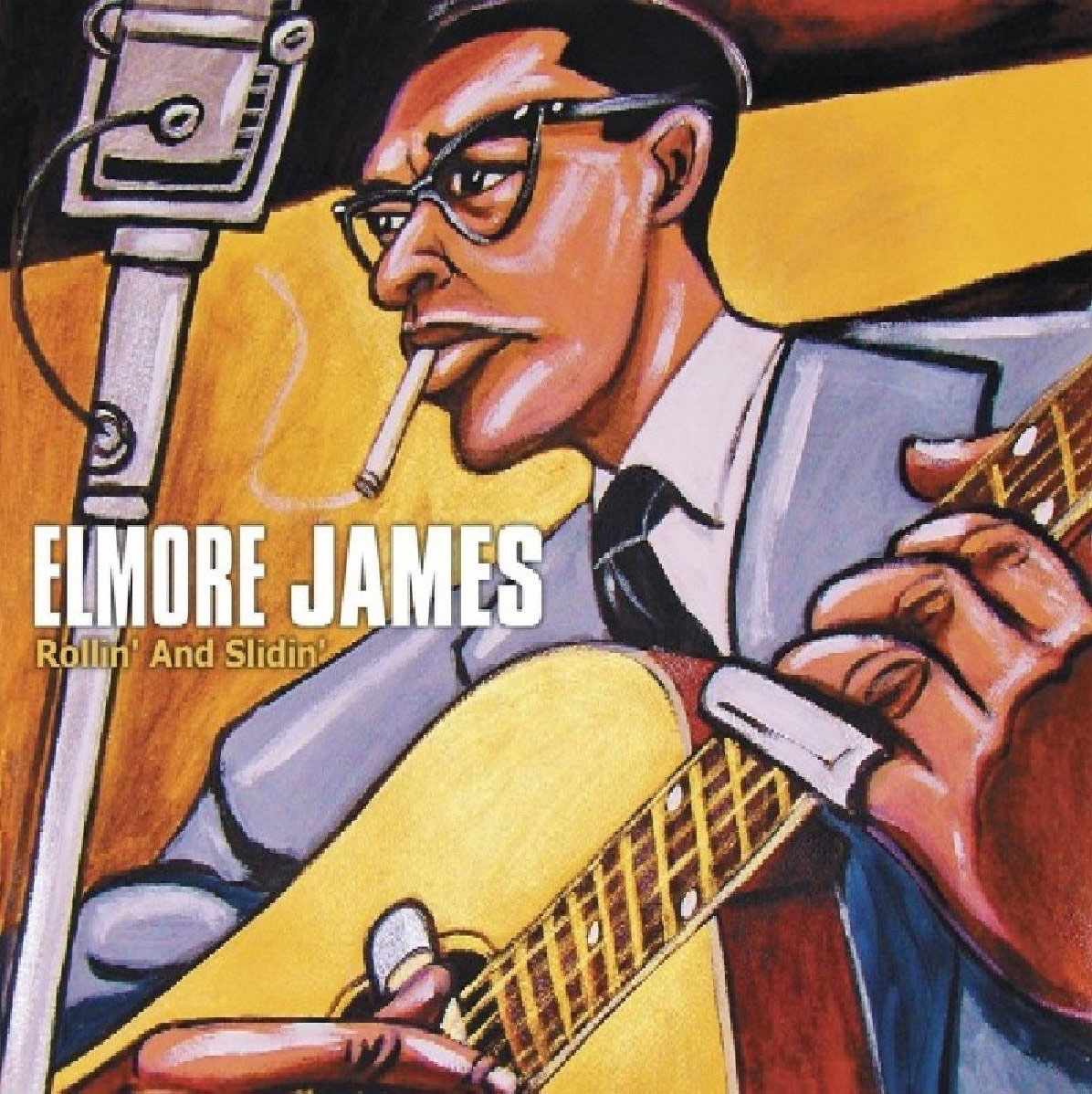
Photo by Andy Ellis
If you don’t play slide guitar, start now. It’s easier than you might think. Just follow the Funkadelic principle: “Free your mind and your ass”—or in this case, your fingers—“will follow.”
There are no limitations of genre or technique with slide. The slide empire extends from the stab ’n’ slice of Delta blues granddaddy Son House to the whinnying cries of Muddy Waters, the bare-knuckled rumblings of J.B. Hutto to the righteous roots of Ry Cooder, the infinite sonic universe of India’s Debashish Bhattacharya to the modernistic wail of the Edge, and the free-flying jazz of Sonny Sharrock to the omnivorous odyssey of Derek Trucks, with all kinds of artistic stops between. And it doesn’t matter if you’re a shred master or just learning basic chords. Everybody can do it—trust me. You only need two things to play slide: a guitar and, of course, a slide!
When I showed up with a big steel slide for a lesson with country blues virtuoso Paul Rishell, he asked me, “Why are you trying to play with a sewer pipe on your finger?”
Let’s assume you’ve already got the guitar—and in this case, we’re talking conventional roundneck guitars, verses lap or pedal steels, or squareneck resonators. (For a jump start on playing lap steel, read Senior Editor Andy Ellis’ “Hand Jive! Master the Fundamentals of Lap Steel” on premierguitar.com.) Some say you need to raise a guitar’s action for slide, and while that’s an option, it’s typically unnecessary—especially if you’ll be playing electric guitar with at least a tad of distortion. That’ll cover up any minimal fret or neck noise. And honestly, when I hear the occasional “clunk” of a slide on the neck of an acoustic guitar, I just consider it part of the approach’s charm, reminiscent of cool field recordings of Fred McDowell, R.L. Burnside, and other great rural American sliders who I admire. When you’re in the early stages of slide discovery, let nothing discourage or distract you from the quest.
With a trusty guitar at the ready, the next tool you need is a slide. Here’s where things can seem complicated. The market is flooded with slides made from a wide variety of materials and with differing dimensions. But the only thing that’s important is finding the slide that works and feels best for you. There are three factors to consider in choosing the right slide: size, weight, and material. Let’s tackle size—both length and girth—first.

Long steel slides are popular with beginners. They’re easy to find, and with their fretboard-spanning reach, they don’t demand much subtlety, but they can also be cumbersome. The bottom line is that slide selection is ultimately subjective. Photo by Andy Ellis
Mutt or Jeff?
Some players dig a long side that fits across all six strings. Certainly, with a longer slide the accuracy of your fretting hand is less important. Such fretboard-spanning slides make it easy to play full chords in open tunings and, provided you’re accurate with your picking hand, hit the notes you want to ring out. It’s easy to find long slides, too. Almost every slide manufacturer, from giants like Jim Dunlop and Fender to one-man operations like Colorado’s Rocky Mountain Slides and Austin’s Glassbender Guitar Slides, makes them. But long slides aren’t right for every player—especially if you’re aiming for precision and optimum control over dynamics.
Long slides are typically a little more cumbersome than their shorter kin. With few exceptions, they have a wider interior diameter that causes them to wear loosely on your finger—especially if you play with a slide on your pinky. This means that to play with a longer, looser slide, you need to use at least two fingers—one to wear the slide and one next to that to stabilize the slide from wiggling—at all times. Years ago, when I showed up with a big steel slide for a lesson with country blues virtuoso Paul Rishell, he asked me, “Why are you trying to play with a sewer pipe on your finger?” I laughed, but when he let me try his shorter, tighter-fitting slide, I could instantly play with more accuracy and comfort. That said, when Duane Allman wasn’t using one of the lightweight Coricidin bottles he most famously employed for slide, he often brandished a big, heavy-ass, 6-string-spanning brass slide. As in all things slide, it’s a matter of personal taste, comfort, style, and mood.

One of the pioneers of electric slide guitar, Elmore James influenced several generations of blues and rock guitarists, and his songs have been covered by Albert King, Eric Clapton, Jimi Hendrix, and Stevie Ray Vaughan.
Most players wear a slide on the pinky, with some notable exceptions, like Bonnie Raitt, who gives slide convention the bird by wearing her slide on her middle finger. Due to the nature of guitar tunings—especially open tunings—you can access the same chord and single-note sounds with either a long or short slide. But a shorter slide—measuring, say, 2″ and covering four strings, verses the typical 2 1/2″-size of fretboard-spanning slides—offers more control over dynamics and fingering, especially when worn firmly on the pinky.
Short slides should fit snug. (Ideally, so should long slides.) A short slide that has too wide an interior diameter to grab the finger tightly is hard to use. It will travel up and down as well as wiggle from side to side. That’s no good. But secure pinky slides have multiple advantages over their longer cousins. A long slide immobilizes the joints of the finger it’s worn on. Most short slides will rest above the middle knuckle, which means the finger wearing the slide can bend to make more accurate contact with the strings and expand chords by fretting additional single notes. It’ll still be necessary to pin the slide with the adjacent finger to keep sufficient pressure on the strings while playing slide passages, but that requires less effort with a short, lightweight slide. A shorter slide also encourages developing more accurate, selective string work, and that’s a plus for any guitar approach. Also, when you’re between slide licks, a smaller, lighter slide feels less awkward dangling from a finger on the fretting hand as it waits to be pressed back into service.
Grab a guitar and follow along with author Ted Drozdowski who offers an excellent launching point for learning slide guitar.
[embedded content]